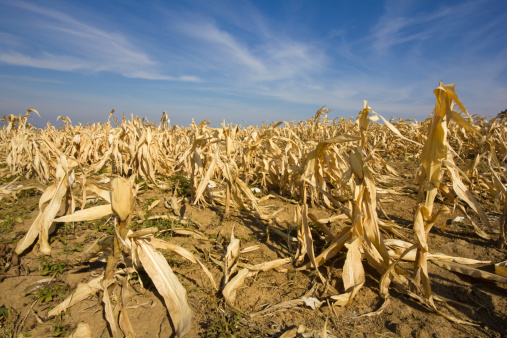Infrastructure
Drought Is Causing Level of Western U.S. to Rise
Published:
Last Updated:
The drought throughout the Western United States, particularly California, may be the worst in a century. Aside from the ruin of crops and possible permanent damage to soil, the dry weather has had another effect. It is causing the level of the entire region to rise.
According to a research paper published in Science, reported by scientists at the Scripps Institution of Oceanography at UC San Diego, experts have observed the change. What the research does not address much is whether the phenomenon matters. According to the data:
Investigating ground positioning data from GPS stations throughout the west, Scripps researchers Adrian Borsa, Duncan Agnew, and Dan Cayan found that the water shortage is causing an “uplift” effect up to 15 millimeters (more than half an inch) in California’s mountains and on average four millimeters (0.15 of an inch) across the west. From the GPS data, they estimate the water deficit at nearly 240 gigatons (63 trillion gallons of water), equivalent to a four-inch layer of water spread out over the entire western U.S.
And:
“These results quantify the amount of water mass lost in the past few years,” said Cayan. “It also represents a powerful new way to track water resources over a very large landscape. We can home in on the Sierra Nevada mountains and critical California snowpack. These results demonstrate that this technique can be used to study changes in fresh water stocks in other regions around the world, if they have a network of GPS sensors.”
READ ALSO: 10 Cities Running Out of Water
While these may be fascinating observations, they won’t bring back the water. Based on Drought Monitor data, nearly all of California suffers from the two worst types of drought — “exceptional” and “extreme.”
And there is little improvement expected:
rainfall during the last few weeks has been many times normal in part of the deserts of southeastern California, and severe drought was improved to moderate drought in some of this area where precipitation totals are now above normal for at least the last 6 months. Unfortunately, rainfall in this arid region will have no impact on the water shortages and seriously low reservoir stores reported throughout the state.
The average American spends $17,274 on debit cards a year, and it’s a HUGE mistake. First, debit cards don’t have the same fraud protections as credit cards. Once your money is gone, it’s gone. But more importantly you can actually get something back from this spending every time you swipe.
Issuers are handing out wild bonuses right now. With some you can earn up to 5% back on every purchase. That’s like getting a 5% discount on everything you buy!
Our top pick is kind of hard to imagine. Not only does it pay up to 5% back, it also includes a $200 cash back reward in the first six months, a 0% intro APR, and…. $0 annual fee. It’s quite literally free money for any one that uses a card regularly. Click here to learn more!
Flywheel Publishing has partnered with CardRatings to provide coverage of credit card products. Flywheel Publishing and CardRatings may receive a commission from card issuers.
Thank you for reading! Have some feedback for us?
Contact the 24/7 Wall St. editorial team.